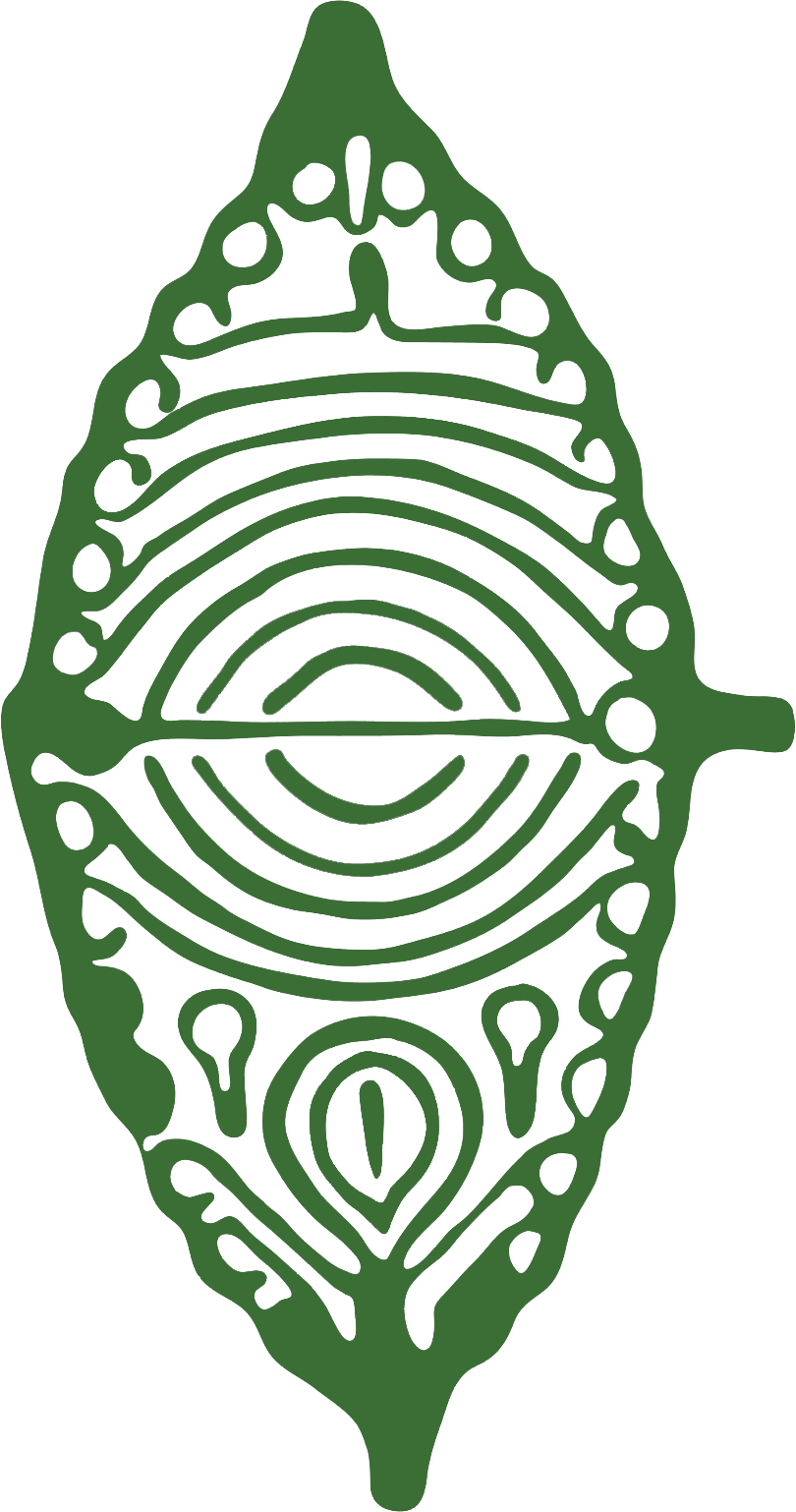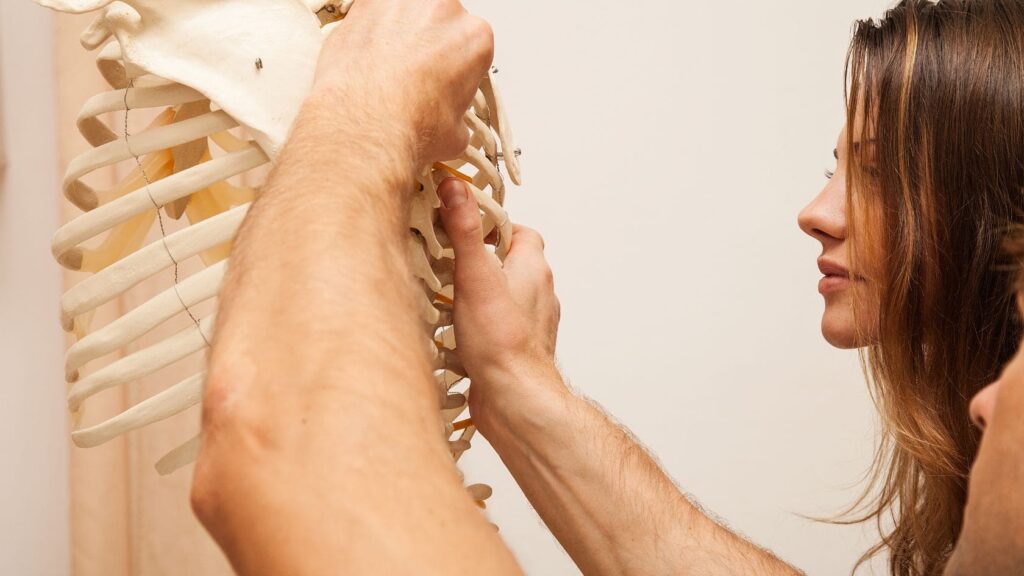When faced with health problems related to the musculoskeletal system, it is vital to choose the right type of treatment and practitioner. Two of the most popular options are the osteopathy and the chiropracticboth known for their non-invasive and manual approaches. However, despite some similarities, there are fundamental differences in their philosophies, techniques and applications that can influence the choice of the right treatment for each patient.
It is crucial to understand these differences in order to make an informed choice that best aligns with our needs. specific health needs. Therefore, this article delves into the origin, philosophy, and treatment methods of both practices to provide clear guidance on when and why to opt for an osteopath or a chiropractor. In this article we explain the difference between chiropractor and osteopath.
Origin and Philosophy
History of osteopathy: origins and fundamental principles
Osteopathy was founded in 1874 by the American physician Dr. Andrew Taylor Still as a reaction to medical practices that he considered ineffective and often dangerous. Still developed a holistic approach that emphasised the unity of the human body and its intrinsic capacity to heal and maintain health. The fundamental principles of osteopathy include a belief in the interrelationship between the structure and function of the body, and the importance of this relationship to overall health.
History of Chiropractic: Origins and Fundamental Principles
On the other hand, chiropractic was developed by Daniel David Palmer in 1895, also in the United States. Palmer introduced chiropractic based on the manipulation of the spine and the correction of vertebral subluxations, which he believed were the cause of many diseases. In contrast to osteopathy, the chiropractic has historically focused more on the spine and nervous system, and its impact on general health.
Comparison of the underlying philosophies of each practice
While both osteopathy and chiropractic value the body's ability to heal naturally, they differ significantly in their approach. Osteopathy considers the body as a whole and focuses on strengthening the entire musculoskeletal system to improve health, while chiropractic has traditionally focused on adjusting the spine as a means of relieving pain and improving body function. For more detailed information on osteopathy, you can visit the osteopathy page of Malécot Osteopathy in Barcelona, where the treatments and benefits of this discipline are explored in depth.
Training and Qualification
Osteopathic training: Length of study, areas of specialisation and required certifications
The osteopathic training usually involves an intensive programme that can last between four and six years, depending on the country and local regulations. During this time, osteopathic students receive a thorough education in anatomy, physiology, pathology and manual techniques. In addition, they must complete supervised clinical hours to gain practical experience. Osteopaths specialise in a variety of areas, including paediatrics, geriatrics, orthopaedics, and neurology. The certifications required to practice vary by country, but generally include a certification exam and registration with a professional body.
Chiropractor training: Length of study, areas of specialisation and required certifications
Similar to osteopathy, the training of a chiropractor is also rigorous and spans a period of approximately four to five years. Chiropractors focus on spinal manipulation and must learn differential diagnosis, radiology, and specific adjusting techniques. Like osteopaths, they need to accumulate hours of clinical practice under supervision. Certification requires passing a national examination in many countries and maintaining a valid licence through continuing education.
Comparison of educational pathways and regulations in different countries
Both professions are strictly regulated in many countries to ensure that practitioners are appropriately qualified. However, the specifics of regulation may vary. For example, in some European countries, osteopathy is recognised as a separate medical profession, while in others it is more integrated into the general health system.
Treatment Methods
Treatment approach in osteopathy
The approach of treatment in osteopathy is holistic and considers the whole body. It uses a range of techniques, such as musculoskeletal manipulation, soft tissue mobilisation and craniosacral techniques. These techniques are designed to improve mobility, relieve pain, and facilitate the body's self-healing. Osteopaths treat a variety of disorders, from back and head pain to digestive problems and respiratory.
Chiropractic treatment approach
The treatment approach in chiropractic focuses predominantly on the spine and nervous system. Techniques include spinal adjustments, manipulations and sometimes other modalities such as physical therapy. These techniques are aimed at correcting vertebral subluxations to improve nervous system function and, by extension, overall health.
Discussion of differences in treatment approaches and their practical application
Although both treatments use manual techniques, osteopathy has a broader approach that includes all areas of the body and systems, while chiropractic focuses more on the spine. This fundamental difference affects not only the techniques used but also the types of conditions that each can treat most effectively.
Areas of specialisation
Specialisations within osteopathy and types of patients commonly seen
The osteopathy offers a wide range of specialisations ranging from paediatrics to geriatrics, orthopaedics and sports medicine. Due to its holistic and gentle approach, it is suitable for patients of all ages, including newborns and the elderly, as well as pregnant women. Osteopaths treat conditions such as back painHe is also able to treat sports injuries, migraines and digestive problems, adapting his techniques to the specific needs of each patient.
Specialisations within chiropractic and differentiation of patient types
The chiropracticOn the other hand, although it also offers specialisations, it tends to focus more on problems related to the spine and nervous system. Chiropractors are especially sought after by patients suffering from back pain, sciatica, herniated discs and headaches, which are often treated by specific spinal adjustments and manipulation techniques.
Comparison of how each practice addresses various health conditions
Both practices can address a variety of health conditions, but while osteopathy can be used as part of a comprehensive treatment because of its gentle, holistic approach, chiropractic is often preferred by patients seeking specific and rapid relief from problems related to the spine and nervous system.
Scientific Evidence and Acceptance
Scientific evidence supporting osteopathy
The scientific evidence The support for osteopathy has grown significantly in recent years. Studies have demonstrated the effectiveness of osteopathy in treating low back pain, improving postural conditions, and alleviating certain chronic conditions such as asthma and sinusitis. In addition, osteopathy has been recognised for improving overall quality of life by facilitating improvements in the circulatory and nervous system.
Scientific evidence supporting chiropractic
Similarly, chiropractic has been the subject of numerous studies that have validated its efficacy, especially in terms of reducing pain and improving functionality in patients with back and neck problems. Chiropractic spinal manipulation has been shown to be particularly effective in the rapid reduction of acute pain.
Discussion on the acceptance and recognition of both practices in the mainstream health field
Despite some initial debate and controversy, both osteopathy and chiropractic have gained acceptance in mainstream health care in many parts of the world. More and more health professionals are recognising the value of these practices and recommending them as a complement or alternative to traditional medical treatments, especially in cases where conventional medicine has failed to provide significant relief or when patients are seeking less invasive and more natural treatment options.
Cases in which each is recommended
Situations and conditions for which osteopathy is recommended
The osteopathy is especially recommended for those seeking a holistic and non-invasive approach to the treatment of their ailments. It is ideal for conditions including musculoskeletal disorders such as back pain, low back pain and neck tension. It is also effective for digestive problems, tension headaches and stress-related disorders. Osteopathy is suitable for patients of all ages, including babies and the elderly, as the techniques are gentle and can be adapted to suit the patient's individual needs.
Situations and conditions for which chiropractic is recommended
The chiropractic is highly recommended for patients suffering from spine-related conditions such as herniated discs, sciatica, and scoliosis. It is also beneficial for those experiencing chronic back and neck pain, as well as patients who have suffered sports injuries that affect the spine. Chiropractors use adjusting techniques that can provide quick and effective relief for specific spinal alignment problems.
Tips for choosing between an osteopath and a chiropractor based on specific patient needs
For choosing between an osteopath and a chiropractorIt is crucial to consider the nature of your ailments and your personal preferences regarding treatment. If your condition is specifically related to the spine and you are looking for quick results, a chiropractor may be the right choice. On the other hand, if you prefer a more holistic approach that considers the body as a whole and addresses multiple body systems, an osteopath may be more beneficial. It is important to consult with certified practitioners and openly discuss your health issues and expectations before making a decision.
In summary, the key differences between osteopathy and chiropractic lie in their philosophies, treatment methods and areas of expertise. Both practices offer significant benefits, but your choice should be based on your specific health needs and the nature of your conditions. It is vital to recognise the importance of choosing the right practitioner. Opting for treatments with certified professionals and with a good reputation ensures that you receive appropriate and effective care. Before deciding on an osteopath or chiropractor, do your research, consult opinions, and consider how their methods align with your expectations and health needs. If you are considering osteopathy or chiropractic, we encourage you to consult with several practitioners, ask about their qualifications and experience, and discuss your treatment options before making an informed decision. The right choice can make a significant difference to your well-being and quality of life.

Frequently asked questions
What is an osteopath and how does it differ from a chiropractor?
Definition of Osteopath:
- An osteopath is a health professional who uses a holistic approach to diagnose and treat a variety of medical conditions. He or she focuses on how the skeleton, joints, muscles, nerves, circulation, digestive system and organs work together as an integral whole.
Key differences between osteopaths and chiropractors:
- Approach and Philosophy:
- Osteopathy: It takes a holistic approach, treating the body as a whole and considering the relationship between body, mind and spirit.
- Chiropractic: It concentrates mainly on the diagnosis and treatment of mechanical problems of the musculoskeletal system, especially the spine.
- Techniques used:
- Osteopaths: They use a range of techniques, including stretching, gentle mobilisation and manipulation of joints and soft tissues.
- Chiropractors: They often focus on precise and sometimes rapid chiropractic adjustments to correct spinal alignment.
- Training and Clinical Approach:
- Osteopathy: The training includes a broader focus on the total body system, not just the skeletal and nervous system.
- Chiropractic: The training focuses intensively on spinal manipulation and subluxation correction.
- Treatment Objectives:
- Osteopathy: It seeks to improve overall health by improving body function and self-regulation.
- Chiropractic: It focuses on improving pain and function specifically related to the spine and nervous system.
What is the main focus of a chiropractor's treatments?
Main Focus of Chiropractic Treatments: Chiropractic is a health discipline that focuses on the diagnosis, treatment and prevention of mechanical disorders of the musculoskeletal system, with a special emphasis on the spine. Chiropractic treatments are designed to improve function and pain relief through the correction of body alignment, which in turn can improve overall nervous system function and general health.
Highlights of chiropractic treatments:
- Spinal Adjustments:
- Chiropractors are known for their "adjustments" or "manipulations", which are precise applications of pressure to move the joints of the spine within their normal range of motion.
- Focus on Prevention:
- In addition to the treatment of specific conditions, chiropractic focuses on injury prevention and the maintenance of optimal health through education about posture, ergonomics and healthy lifestyle habits.
- Treatment of pain:
- Chiropractors treat problems related to back pain, neck pain, headaches, joint pain and other problems related to injury or dysfunction of the musculoskeletal system.
- Relief without Medication:
- One of the premises of chiropractic is to offer pain relief without the use of drugs or surgery, which appeals to patients who prefer more natural approaches to pain management.
Documented benefits: Although chiropractic treatments are well regarded for certain conditions, it is essential to choose properly certified and experienced practitioners. Patients should look for chiropractors who work within a regulated framework and who collaborate with other health professionals to ensure comprehensive care.
What kind of training do osteopaths and chiropractors receive?
Training Osteopaths and Chiropractors: Fundamental Differences
The training of osteopaths and chiropractors, while similar in some respects, differs significantly in approach, duration and content. Both require rigorous and extensive education, but each delves into different principles and techniques.
Osteopathic training:
- EducationOsteopaths typically complete a four- to five-year programme that includes intensive courses in anatomy, physiology, pathology, osteopathic principles, and clinical diagnosis.
- Holistic ApproachOsteopathic education focuses on the body as an interconnected unit and seeks to identify the root cause of symptoms, not just treat the symptoms themselves.
- Manual TechniquesThey learn a variety of gentle manipulative techniques aimed at improving the mobility and functionality of the body.
Chiropractor training:
- Duration of studiesSimilar to osteopathy, chiropractic training generally requires four to five years of post-graduate studies.
- Spine SpecialisationChiropractors focus primarily on the diagnosis and treatment of mechanical problems of the spine and other parts of the musculoskeletal system.
- Adjustment TechniquesThey specialise in chiropractic adjustments or spinal manipulations that are more direct and often more intense than osteopathic techniques.
Regulations and Certifications:
- RegulationIn many countries, both osteopaths and chiropractors are regulated by national bodies that set educational and practice standards.
- CertificationPractitioners must pass national examinations and obtain licences to practise, ensuring that they meet safety and competence standards.
Educational Comparison:
- InternationallyTraining and regulation can vary significantly. In some countries, osteopathy is integrated into the general medical system, while chiropractic may be seen more as a complementary practice.
Conclusions: The educational pathway and regulations for osteopaths and chiropractors reflect their unique philosophies and areas of expertise. Patients should consider these differences when choosing the type of health professional to consult based on their specific needs.
What are the main differences in treatment techniques between osteopathy and chiropractic?
Osteopathic and chiropractic treatment vary considerably in their approaches and techniques. These differences are fundamental to understanding how each discipline approaches health care.
Osteopathy:
- Integral ApproachOsteopathy focuses on treating the body as an integrated whole, looking for the root cause of health problems, which may include treating areas that are seemingly unrelated to the patient's symptoms.
- Techniques UsedThey include gentle manipulations, stretching and mobilisation of various parts of the body. Osteopathic techniques are known for their delicacy and precision, seeking to restore balance and harmony to the body.
- Treated AreasOsteopaths treat the musculoskeletal system, but also deal with the nervous, circulatory and lymphatic systems, offering a broader approach compared to chiropractic.
Chiropractic:
- Spine SpecialisationChiropractors specialise primarily in the diagnosis, treatment and prevention of mechanical disorders of the spine. Their focus is on correcting vertebral subluxations to improve overall health.
- Adjustment TechniquesChiropractic techniques often involve more intense spinal adjustments, including rapid, precise movements that sometimes result in an audible "clicking" sound.
- Commonly Treated ConditionsThey are particularly effective in the management of back pain, neck pain and headaches related to the spine.
Comparison of Practical Applications:
- Treatment DiversityWhile osteopathy offers a variety of treatments applicable to a wider range of conditions, chiropractic concentrates more intensely on conditions affecting the spine and joints.
- Choice of treatmentOsteopathy: Patients may choose osteopathy for a holistic assessment and treatment of a variety of health problems, while chiropractic may be preferred for specific spinal alignment and postural problems.
Importance of Informed Choice:
It is crucial for patients to understand these differences in order to make an informed choice based on their specific health conditions and treatment preferences.
For which conditions is osteopathy recommended and which are suitable for chiropractic?
Osteopathy and chiropractic, while sharing some treatment methods, specialise in different areas and types of patients. These specialisations mark significant differences in how each practice approaches various health conditions.
Specialisations in Osteopathy:
- Wide Range of ConditionsOsteopaths treat a variety of conditions that are not limited to the musculoskeletal system; they also address problems related to other body systems such as the digestive, respiratory and circulatory systems.
- Patients TreatedBecause of its holistic approach, osteopathy is sought after by patients of all ages, from newborns to the elderly, including the treatment of pregnant women to relieve physical stress during pregnancy.
Specialisations in Chiropractic:
- Focus on the SpineChiropractors focus primarily on the prevention and treatment of mechanical disorders of the spine and joints.
- Common PatientsThey often see patients with back pain, neck and posture-related problems, as well as those suffering from headaches caused by spinal problems.
Comparison of specialisations:
- Treatment of Chronic ConditionsOsteopathy is effective in the management of long-term chronic conditions due to its holistic approach, while chiropractic is very effective in the rapid treatment of acute spinal problems.
- Prevention and MaintenanceBoth practices offer strategies for the maintenance and prevention of disease, but osteopathy provides a broader range of techniques to support the overall health of the body.
Importance of the Right Choice:
Understanding each practice's areas of specialisation helps patients select the type of treatment best suited to their specific needs, thus maximising the benefits to their health.
What scientific evidence supports the effectiveness of osteopathy and chiropractic?
The effectiveness of osteopathy and chiropractic has been the subject of numerous scientific studies seeking to validate their safety and efficacy. It is essential for patients and health professionals to understand what scientific support exists for these practices.
Scientific Evidence in Osteopathy:
- Studies and ReviewsOsteopathic research has shown positive results in the treatment of low back pain, migraines and other conditions related to the musculoskeletal system and beyond. Studies have shown that osteopathic techniques can improve mobility, reduce pain and improve quality of life.
- Scientific PublicationsNumerous articles published in respected medical journals highlight osteopathy's ability to effectively treat a wide range of ailments, emphasising its holistic approach.
Scientific Evidence in Chiropractic:
- Targeted ResearchMost chiropractic research focuses on its effectiveness in relieving back and neck pain and improving spinal function. Controlled studies and meta-analyses have found that chiropractic is often more effective than other modalities for the treatment of low back pain.
- Professional RecognitionChiropractic is recognised by many health institutions as a valid and effective treatment for certain types of spinal pain and other musculoskeletal conditions.
Acceptance in the Conventional Health Sphere:
- Integration and CollaborationOsteopathy and chiropractic are increasingly integrated into mainstream health systems in many countries, working in collaboration with other health professionals to provide a more comprehensive approach to care.
Academic and Professional Debate:
- Ongoing DiscussionsDespite the growing body of evidence, both practices face scepticism and debate within the medical community. Continued dialogue and further research are crucial to increase their acceptance and understanding.
This evidence highlights the importance of making informed choices based on sound data and the need for further research to fully understand the benefits and limitations of osteopathy and chiropractic.
How can patients choose between an osteopath and a chiropractor according to their health needs?
Recommended situations and conditions for osteopathy and chiropractic
The choice between osteopathy and chiropractic may depend on the patient's specific conditions and health needs. Each practice has its strengths and is recommended in different clinical scenarios.
Osteopathy:
- Back and Neck PainOsteopathy is effective in treating back and neck pain, especially those related to muscle tension and postural imbalances.
- Digestive ProblemsOsteopaths can work on visceral motility to improve conditions such as irritable bowel syndrome and other digestive disorders.
- Headaches and MigrainesThrough cranial manipulation, osteopaths can relieve tension in areas that contribute to headaches and migraines.
- Pregnancy and PostpartumOsteopathy offers gentle techniques that are safe during pregnancy to relieve back pain and help the body adapt to the changes.
Chiropractic:
- Vertebral MisalignmentsChiropractic is well known for its ability to adjust the spine and improve nerve function and alignment.
- Sports InjuriesChiropractors often treat athletes to improve body mechanics and treat specific sports-related injuries.
- RehabilitationAfter an accident or surgery, chiropractic can facilitate a quicker return to normal activity.
- Disability PreventionRegular chiropractic sessions can help maintain spinal health and prevent future disabilities.
Tips for Choosing Between Osteopathy and Chiropractic:
- Needs AssessmentConsider what aspects of your health you want to address and whether you prefer a more holistic or a spine-focused approach.
- Consult OpinionsTalk to professionals from both disciplines and, if possible, consult your GP for a recommendation based on your medical history.
- Test BothSometimes the best way to decide is to try both treatments to determine which offers the most effective relief for your symptoms.
Warning Signs to Recognise Unprofessional Practice:
- Exaggerated PromisesBe wary of professionals who guarantee instant results or miracle cures.
- Lack of CertificationsMake sure the practitioner has the proper credentials and licenses to practice.
- Uniform TreatmentAn approach that does not consider individual conditions and uses a single method for all patients may not be appropriate.
These key points will help you make an informed choice about what type of treatment might be most beneficial for your specific needs.
What are the common myths about osteopathy and chiropractic?
There are several common myths related to osteopathy and chiropractic that often lead to confusion and misunderstandings about these practices. Here I break down some of these myths and the realities behind them:
- Chiropractic SafetyA common myth is that chiropractic is unsafe. However, the reality is that, when practiced by trained and licensed professionals, chiropractic is considered one of the safest forms of treatment for musculoskeletal disorders. Chiropractic techniques, which include manual adjustments, are generally safe and effective.
- Effectiveness of ChiropracticAnother myth is that chiropractic is ineffective. However, scientific studies have shown its effectiveness, especially in the treatment of back and neck pain, as well as other musculoskeletal problems. These studies support chiropractic adjustments as an effective means of improving joint function and relieving pain.
- Chiropractor trainingThere is also a myth that chiropractors are not well trained. In reality, chiropractors go through a rigorous education programme that includes studies in anatomy, physiology, diagnosis and adjusting techniques, and are subject to strict licensing and regulation.
These myths, often propagated through lack of information or understanding, do not reflect the true nature and benefits of chiropractic. It is crucial to obtain information from reliable sources and to consult properly accredited practitioners to properly explore the benefits of this practice.
What regulations exist for the practice of osteopathy and chiropractic?
The regulation of osteopathy and chiropractic varies significantly between countries and regions, affecting both training and clinical practice.
Regulations for Osteopathy:
- EuropeIn many European countries, osteopathy is regulated by specific laws requiring university training and registration with national colleges or regulatory bodies.
- United StatesOsteopaths are fully licensed medical professionals (DOs - Doctors of Osteopathy) who complete an educational programme similar to that of medical doctors (MDs), including residencies and specialisations.
Chiropractic Regulations:
- InternationallyChiropractic is regulated so that chiropractors must obtain a licence to practice, which involves completing an education at an accredited institution and passing national licensing exams.
- United States and CanadaThere are rigorous controls, including the need to pass a national exam and, in many places, state or provincial exams.
In both fields, professionals are subject to ethical and professional practice standards that seek to protect patient health and safety, ensuring that only properly trained and certified professionals may practice.
What are the benefits of combining osteopathy and chiropractic in health care?
Combining osteopathy and chiropractic can offer a holistic and comprehensive approach to the treatment of various conditions, drawing on the strengths of both practices.
- Integral ApproachWhile chiropractic focuses more on the spine and joint adjustment to improve nervous system function, osteopathy provides a broader approach that includes treatment of muscles, joints and body systems. This combination can offer a more comprehensive solution especially for patients with complex problems.
- Improved Mobility and Pain ReductionBoth therapies are known to be effective in improving mobility and reducing pain, which can be especially beneficial for patients with chronic conditions.
- Disease PreventionBy combining these two practices, you can improve overall body function and potentially prevent the onset of certain health conditions.
- Personalisation of treatmentThe combination of techniques allows therapists to tailor treatments to the specific needs of each patient, offering personalised care that can be more effective.
The integration of osteopathy and chiropractic into a treatment plan can offer a more comprehensive and effective approach, promoting the overall health and well-being of the patient.







